|
|
|
MARBLE ICON, DEPICTING THE ROMAN DUX LUCIUS ARTORIUS CASTUS (THE ROMAN ARTHUR)
|
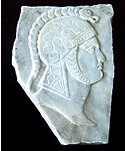
| Photo
Copyright 2005 |
| David
Xavier Kenney |
|
MARBLE ICON, DEPICTING THE ROMAN DUX LUCIUS ARTORIUS CASTUS (THE ROMAN ARTHUR) |
Some of the information and photographs with this piece will soon be edited.
Material: Gray Marble
Era: 2nd Century AD
Culture: Roman
Style: Roman
Origin: Campania, Italy via an Australian collector of
the 1930's via an Atlanta Antiquities Dealer.
Out of hundreds of Roman legionary artifacts and years of study another "Artorius artifact" will soon be added with this marble icon of Lucuis Artorius Castus and the VI Victrix Ring, it is a Roman silver ring that I have titled the "Artorius Ring". It appears to have originated from the same location in England as the VI Victrix Ring, what is known for a fact is that it was purchased from the same old German collection (of legionary rings) shortly after the purchase of the VI Victrix ring. Just to mention it, during that same time period a collector who is a friend contacted me to ask for a further authentication of a silver legionary ring of XX Valeria Victrix, it was from the same old German collection and similar in style. It is most probable that all three of these rings (VI Victrix Ring, Artorius Ring, and XX Valera Victrix Ring) had been found together. Anyhow, the Artorius Ring is mainly to do with Sarmatian celestial and other gods and goddesses in connection with "AL I SARM (Ala I Sarmatia" and Castus as their dux, a victory over the Picts, and either an expedition or a victory over the Gauls, there is also a mention of Frisians in the service of Rome. It shows a mystical helmet, armor, weapons, standards (of pennants and windsocks with the following animal or creature heads; Bear Dragon, Dog Dragon, Crocodile, Horse, Lion Dragon, and Wolf Dragon) being made and delivered to Castus by among other things a celestial horse's right fore-leg and hoof. There are also many animals/parts of animals and creatures/parts of creatures (including dragons) connected with various parts of the armor and standards, but the largest is a horse's leg/hoof and head, and a dog' or dog/dragon's head. The primary theme is the Sarmatian war/sword god having the power of his sword being symbolically delivered to Castus. There is much more with this, some of it shows symbolism of an exact belief of the Sarmatian and the Scythian war/sword god. Concerning the Sarmatian war / sword god I should be able to obtain photographs of the following. On the underside of the bezel and among other things but central there is a large alter that has a large three headed figure holding a long sword diagonally upright. The three heads are; a woman's head facing up and to the left, a dog dragon's head facing the viewer, and a bearded man's head facing downward and to the right, the bearded man is holding and looking at a small boy. There are inscriptions in bind letters, I may or may not be able to photograph these, but nevertheless they read "TIB" which should stand for the Scythian root word TAB for fire, or the Hurrian word TIBIR for fire smith god. The next word in small letters is "SED", this should be the IE. word SED for settlement and the Roman word SEDERE for to sit or to settle. The last inscription is "BRETV", this should stand for the Roman Fort and veteran's colonia at Bremetennacum Veteranorum (in modern day Ribchester, Lancashire, England)' the fort was garrisoned by Sarmatian cavalry. The position of the long sword's tip is exact as to where on the bezel a large celestial or aerial sword blade appears, the sword's blade, the sword's hilt, and a smoking pipe are being put into a large sheath that has a ram's head in one position and a beaver's head in another position, the sheath is Castus's sheath. Much of the information on the ring supports information on this Artorius icon marble piece and the VI Victrix Ring. As soon as I complete the Judea Capta Group of artifacts I will post more information and pictures of the Artorius Ring.
This is a marble image in relief of Lucius Artoriius Castus of the VI Victrix as a Roman Dux (Special General) who is seen by some as an ancient contender for a primary influence for the Medieval King Arthur figure. My research with artifacts shows that Castus was "an Arthur", but not "the famed Arthur" of those times. This is due to the discovery of a previously unknown Belgic (Celtic/Germanic) bear god named Artor who was connected to the Celtic war/sword god named Camulos (a Roman version of this god was named Mars Camulos). There is every indicator that both Artor and Camulos were gods of a mystery that had initiates, and that the Britannic Islands were connected to this. It appears that the following rulers may have been associated with such a mystery; Julius Caesar, possibly Augustus, Claudius, Vespasian, and Titus; although there may have been others (for example Augustus and Titus may" have been the only rulers to inherit such a title). There are other indicators that the Emperors; Caligula, Domitian and Commodus may have attempted to gain such a recognition, but failed. It appears that Castus may have been the only none-Roman ruler to gain such a title, and that this was honored by the members of Legion VI Victrix, the Campanians, the region of his last posting in Dalmatia (modern Croatia), and possibly some Cavalry units. The icon was found in Campania, Italy in the 1930's. According to authors and Castus Researchers Linda Malcor and Scott Littleton, Campania was the home of the Artori family and the birth place of Castus. It has miniature art on the front, all five sides, and the back. It has been coated in isinglass (sturgeon glue). Speculation is that it was broken off a monument and removed at some time in the Late 2nd to Early 3rd C. AD. What is verifiable is that in antiquity it was made into a icon/memento that could be hand. It has a perfect hand fit for someone with an approx. American 7 to 9 glove size. I had thought that the art on this piece was somewhat unique for Roman art, but I discovered that this was not so with some miniature art of the Roman Period. The icon has been cross referenced with dozens of artifacts and it is now certain that it is of the Roman Imperial Era. The next three picture groups titled "Lucius", "Artoriius" and "Castus" show that the symbols may connect to the names of Castus. It is a speculation that may be based on coincidence only, but nevertheless I think it is worth consideration.
|
|
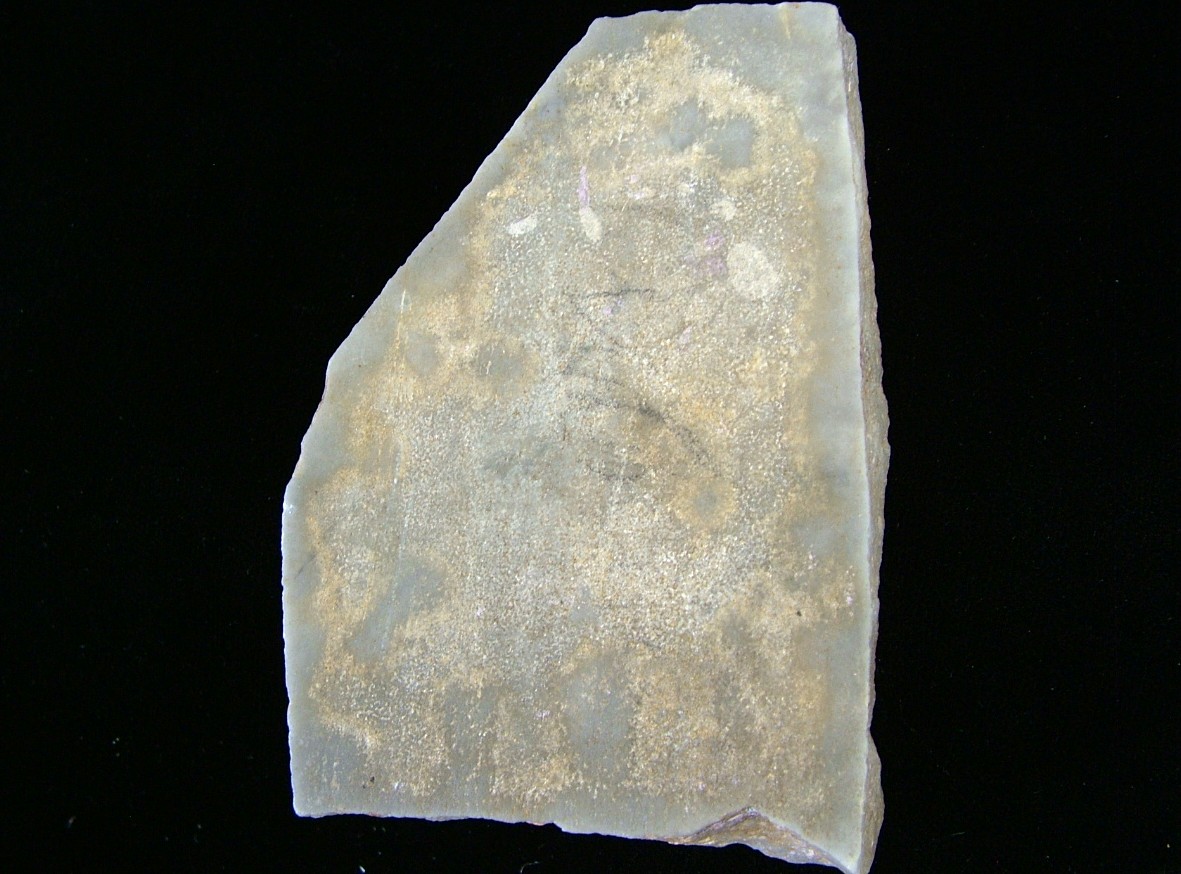
| Photo
Copyright 2008 |
| David
Xavier Kenney |
|
LUCIUS |
The Roman first name Lucius is a name that means "light" or "or brightness". This group of pictures will show that there is a theme of a light bringer on the back of this piece. The very micro art on this will change when viewed from various positions. The pictures with this group of pictures focuses on a micro piece of silver metal (it is 1 mm in length), it may be a relic. To the scientific mind the belief in relics is mere primitive superstition and it is dismissed as such. To the believer, relics (either real or supposed) are viewed as anchors of the past that provide faith in the present and future. Apparently jewelers and other artisans whenever possible or by commission would incorporate relics or bits of relics with miniature or micro art in their creations. Research of miniature art on artifacts shows that weapons makers, artists (sculptures and painters), and jewelers were the keepers and recorders of the history and, or beliefs of a people; furthermore miniature art on prehistoric artifacts show that this practice is extremely ancient. According to my observations, miniature art still continues among some traditional jewelers and a few metal smiths (apparently usually with little or no knowledge of this on the part of the client), but it appears to have disappeared with sculptures and painters; it may be last seen with the older European artists of the 1950's. In 2007 a major museum in the U.S. announced the finding of miniature art on a painting done by a master artist, it is considered to be an important discovery. There are certain artifacts that may contain relics that are listed on this website and on kingarthurbanner.com. This micro metal piece on this Marble Icon of Lucius Artorius Castus may represent a piece of a: standard, helmet or armor. Pictures 4 thru 10 show a micro piece of silver metal that is a bear and the letter "B" for Britannia (for more information on this go to "Icon's Back with Roman and Later Arthurian" with the Important Artifacts). The metal is treated and sparkles like a star. Picture 11 shows that at an angle this will appear as the portrait of a male Roman. Pictures 12 thru 18 shows the following: a head in a boat (suggesting a sitting figure) or a head in a boat with a swan's head. This figure is distinctly different at one angle seen in Picture's 12 and 15, it shows what may be a hippogriffin or hippocampus on the front of a sleigh. Next to this but not seen in the pictures is the inscription "AQULA", this may be a metaphor for a legionary Aqulia (Eagle) and symbolize Castus's battle standard. Pictures 19 thru 22 shows the metal piece as a figure next to a horse's head facing the viewer, although the horse's head can also appear as a larger man's head or a small figure being held. Pictures 23 thru 25 shows a cup with a face, behind this is a dolphin. It should be mentioned that there is a light or star seen in Pictures 1, 2, and 4 with the "Icon's Back 1/1". According to new research on the "Saxon Ring Of Arthur As The Scythian Navigator, Thunderer, and War god", it appears that there are at least a few symbols that represent the Soma of the Indo Europeans. As soon as information with the "Saxon Ring" is updated, speculations concerning this proposed relic will be posted.
|
|
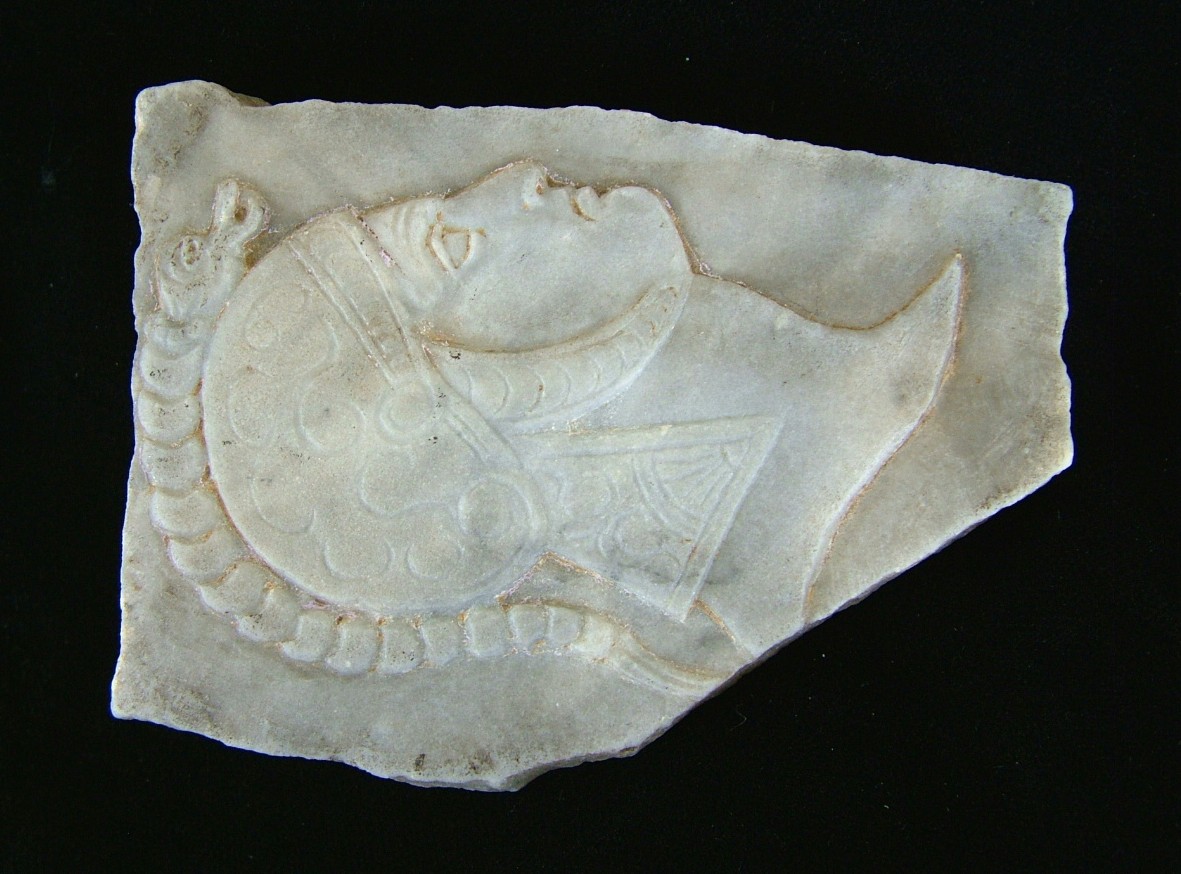
| Photo
Copyright 2008 |
| David
Xavier Kenney |
|
ARTORIUS |
The name Artorius is a Roman family name that originates from the Greek name for bear (Artos). The first three pictures shows a distinct bear's head, this may also be a horse's head and possibly a dog's head. This should show a connection to the bear as a rider god and to the Cavalry. Pictures 4 thru 6 shows a lion's head, this most likely shows an association with Hercules, but it is also another dog's head. Picture 8 shows a Roman wood oven, there is a woman's face on the opening. This most likely is a representation of the Roman bread oven goddess Fornax. Picture's 9 thru 11 shows the back of the oven. The engraved volcano on the bottom may or may not be connected to the idea of an oven. On the back there is also another hint of a Roman oven. At the bottom is a mountain by the sea, this may be a volcanic mountain.
|
|
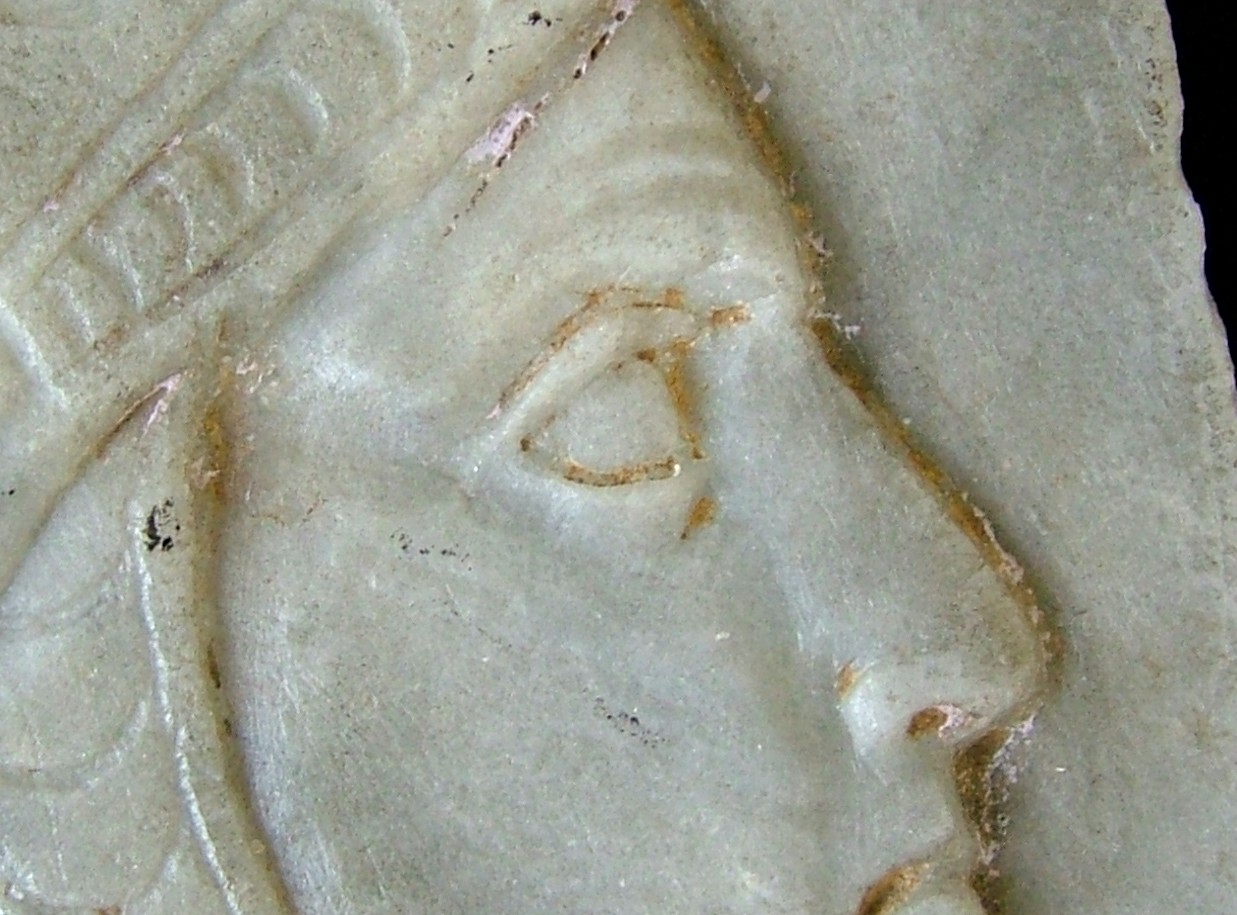
| Photo
Copyright 2008 |
| David
Xavier Kenney |
|
CASTUS |
The root name Castus means pure, but it's original form as Castroris means beaver. This may have been a plus for Castus while with Legion VI Victrix as I have two artifacts that show that the beaver was considered sacred in the north of Britain. The following pictures show engraved work on Castus's face that is of the Roman Period. Picture's 1 thru 6 show's that around the eye is a large Roman letter "C". The eye itself has a beaver head coming out of tree stump. The beaver's head is also two facing heads, there is little doubt that these are the mythical twins (of different fathers) Castor and Pollux, but with Castor as the dominant twin, as mentioned Castor means beaver, Pollux means sweet wine. These twins are associated with the Gemini twins aka from the Greeks to the Romans as the Dioskouroi. The Dioskouroi were worshipped by sailors as protectors in the form of St. Elmo's Fire, but they were also worshipped by Roman Cavalrymen as they were both horsemen. The swan boat on the micro metal piece on the back may be connected to this as Castor and Pollux's mother was Leda (a human who sometimes took the form of a swan), Leda was also the mother of Helene of Troy. Picture 5 with the eye shows a standing figure, overhead the eyelid is a fish with something coming from it's mouth. Picture's 7 thru 9 shows that the eye lid is now a female figure that is also the club of a figure under the eye (the form of this can be seen in Picture 10). The eye now shows that it has a flower with a standing figure in the center. This flower is somewhat similar as the flowers seen on the memorial stele of Castus in Croatia, it most likely is connected to Castor, Pollux, and their mother Leda. Picture's 11 thru 15 show the eye now a large headed figure in a fisherman's hat, he is putting a hand with two fingers (in the form of a fork) on a face. The hand and finger's may also be a Roman letter "H", if so then it would most likely stand for Hercules. Pictures 16 and 17 show what may be a figure in a helmsman's hat holding a ship's rudder.
|
|
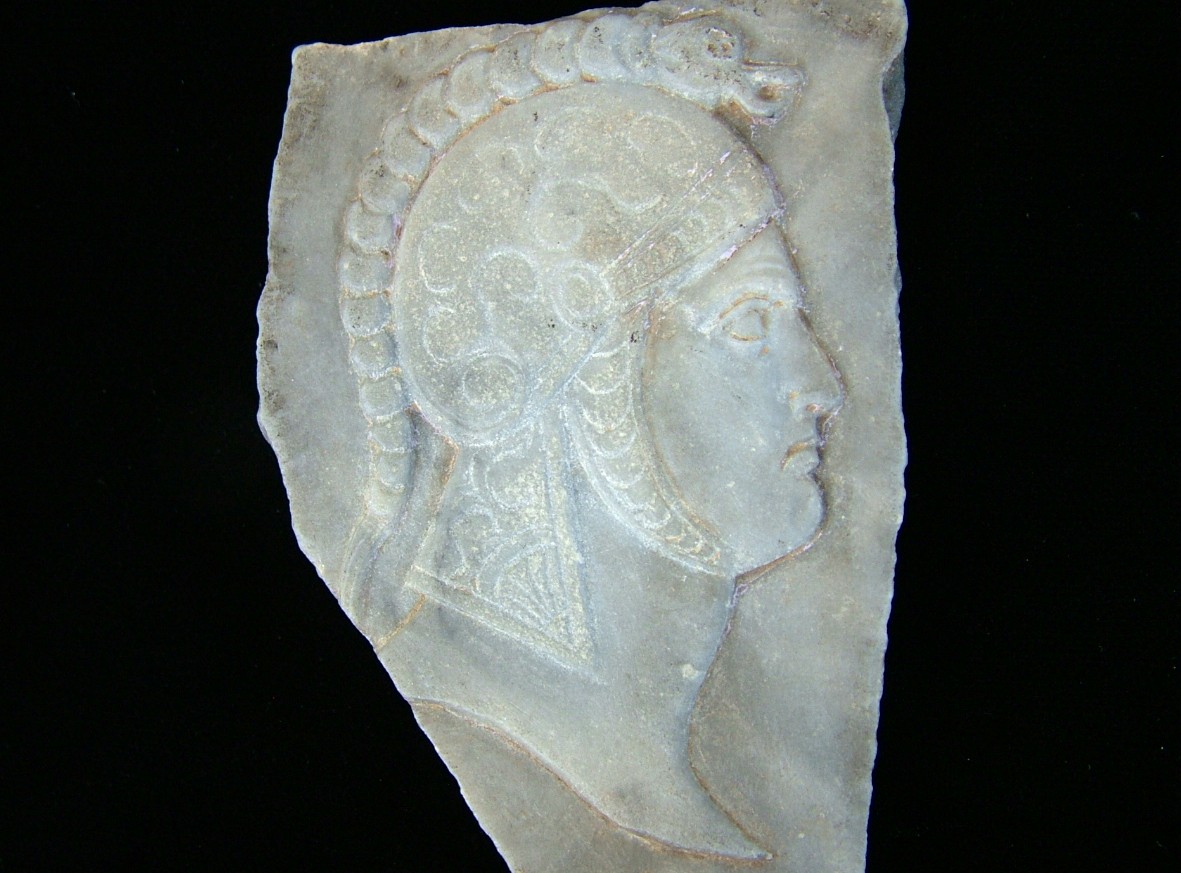
| Photo Copyright 2008 |
| David Xavier Kenney |
|
Detail Pictures Of The Marble Piece, Depicting The Roman Dux Lucius Artorius Castus (a Roman Arthur)
|
This group pf pictures shows much of the detail of the front of the icon, but particularly the bird and dog dragon's head of the Romano Celtic war god Mars Camulos. This shows analysis shows that the helmet seen on this piece has miniature art depicting the career of the Roman dux Lucius Artorius Castus (a Roman Arthur), this is particularly so with what is seen on the dragon crest. It is possible that this dragon crest may have been made in imitation of Castus's personal standard while a Roman Dux.
| |
|
|
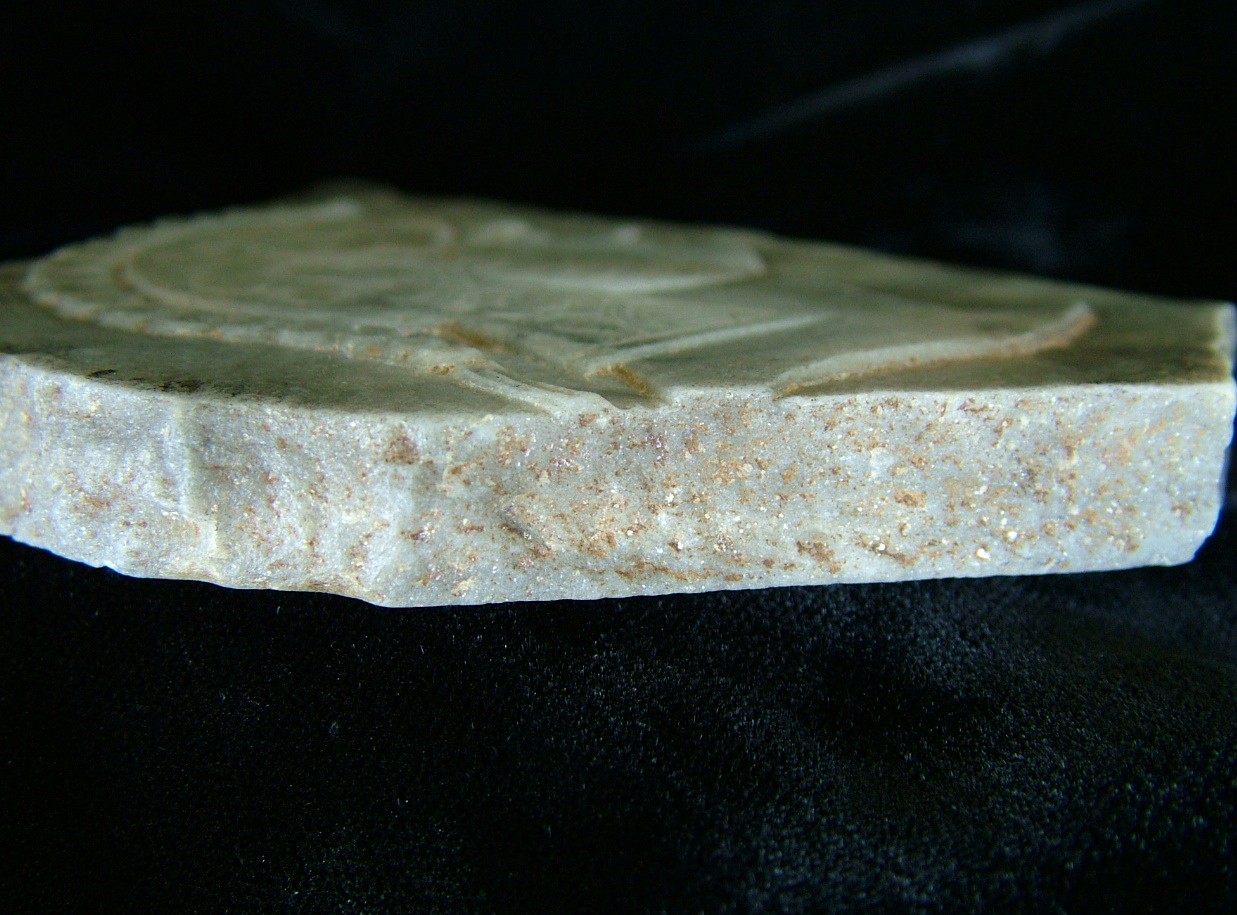
| Photo Copyright 2008 |
| David Xavier Kenney |
|
ICON'S SIDES
The sides have engravings, some paint, and resin/sand work from Roman and later periods. What be can be seen in Pictures 4 and 5 are letters and horse's heads. What cannot be seen is that there is a raised Roman inscription of the Roman Period that reads "L A C", this is the abbreviation for Lucuis Artorius Castus, at a slightly different position this can also read as "ARTOS"a Greek word variation for a bear. When this in turned upside down it will read D. ALA, the Roman Abbreviation for a Roman Dux of an Ala (a Cavalry Wing of 500, although it should mean Calvary Wings).
|
|
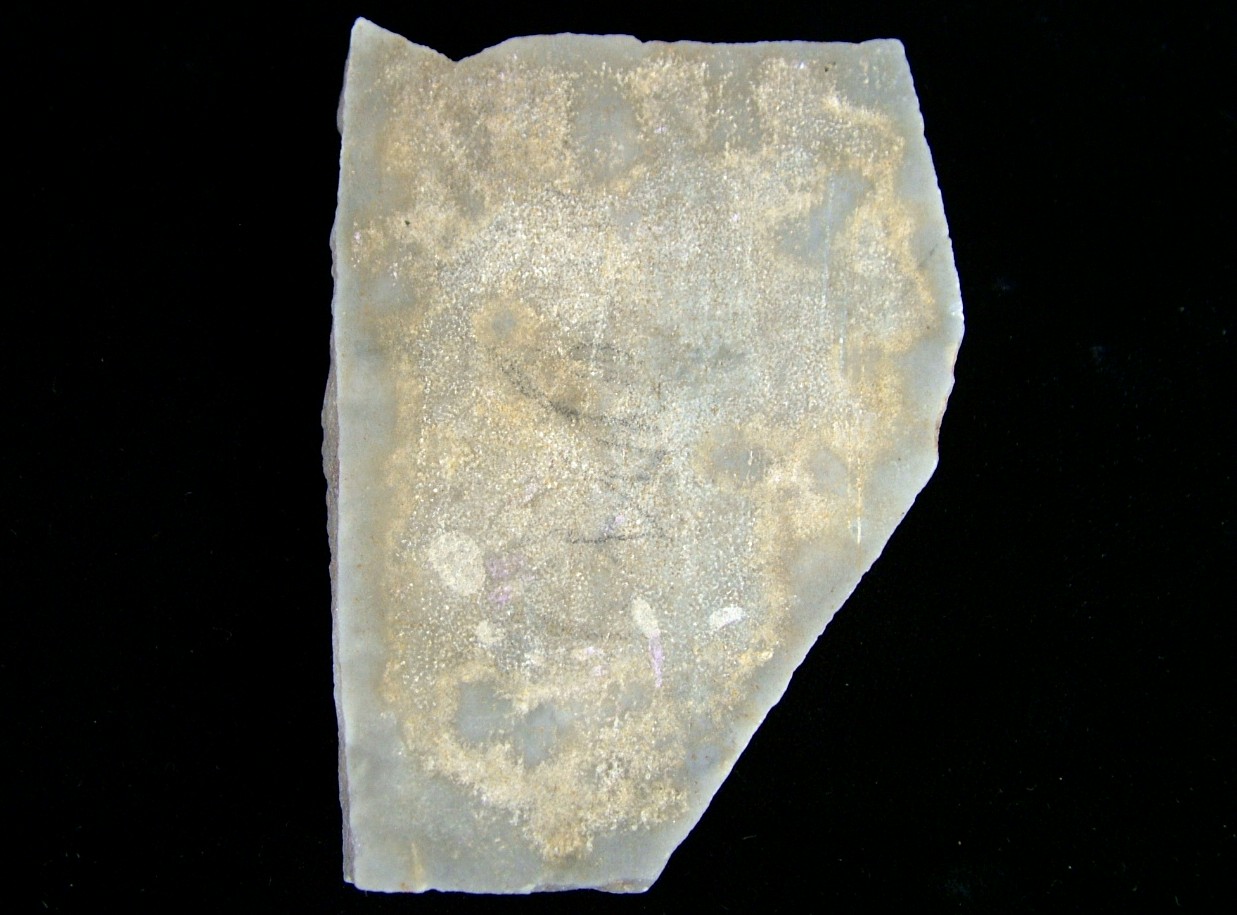
| Photo Copyright 2008 |
| David Xavier Kenney |
|
ICON'S BACK 1/1
The back of the piece has been treated with a lead wash, minute amounts of paint, and wax mixed with sand and resin. Picture 2 originally had 6 larger heads over a Roman Cavalry spatha (long sword) that has a break near it's tip, the first head originally had a smaller figure next to it and with it's hand on the spatha. Three of these heads made the Roman letters "V I C", the "C" with this also was an "L". According to information with the VI Victrix Ring (with the Roman Officer Permanent Collection) this is for Legion VI Victrix. The spatha is on top of, or is also a long eared mule fish, it can be assumed that this is a type of Capricorn. According to the VI Victrix Ring a long eared mule had been a symbol of that legion while posted in Northern Britain. Picture 4 shows that the spatha/long eared mule's head is also the head of a narwhal, it's horn is inserted in the mouth of a dog with a hat, over the dog's head is a bright light. The dog may or may not be of a later period. Picture's 7 thru 11 shows the piece on it's side, it has a Victoria over the mule's head and as part of it's ears, this was painted over at a later period. Picture 12 shows the piece on it's other side. Along the bottom it has a boat with a nude female ship's figurehead pointed inboard, this was painted over at a later period, of note are the distinct letters "SC" for Senatus Consultus that are seen with Pictures 15 and 16. Picture 19 shows the piece vertically upside down. It shows a figure in a chair, the chair has a dog, or bear, or bear-dog overhead. Pictures 21 thru 25 show a small metal piece that is on the dog, bear, or bear-dog head. Picture 24 and 25 shows the metal piece is a "B" and as a sitting bear, the "B" has bind letters "R", "I", "T", and an "A', there is a larger letter "N" on it. This no doubt stands for Britannia. At least two of my artifacts show that the Romans associated Britannia with the bear. The rest of the pictures show the bottom area from this position. There are various figures. The very bottom of the piece shows with engravings; the sea and a volcanic mountain, there are figures made in paint.
|
|
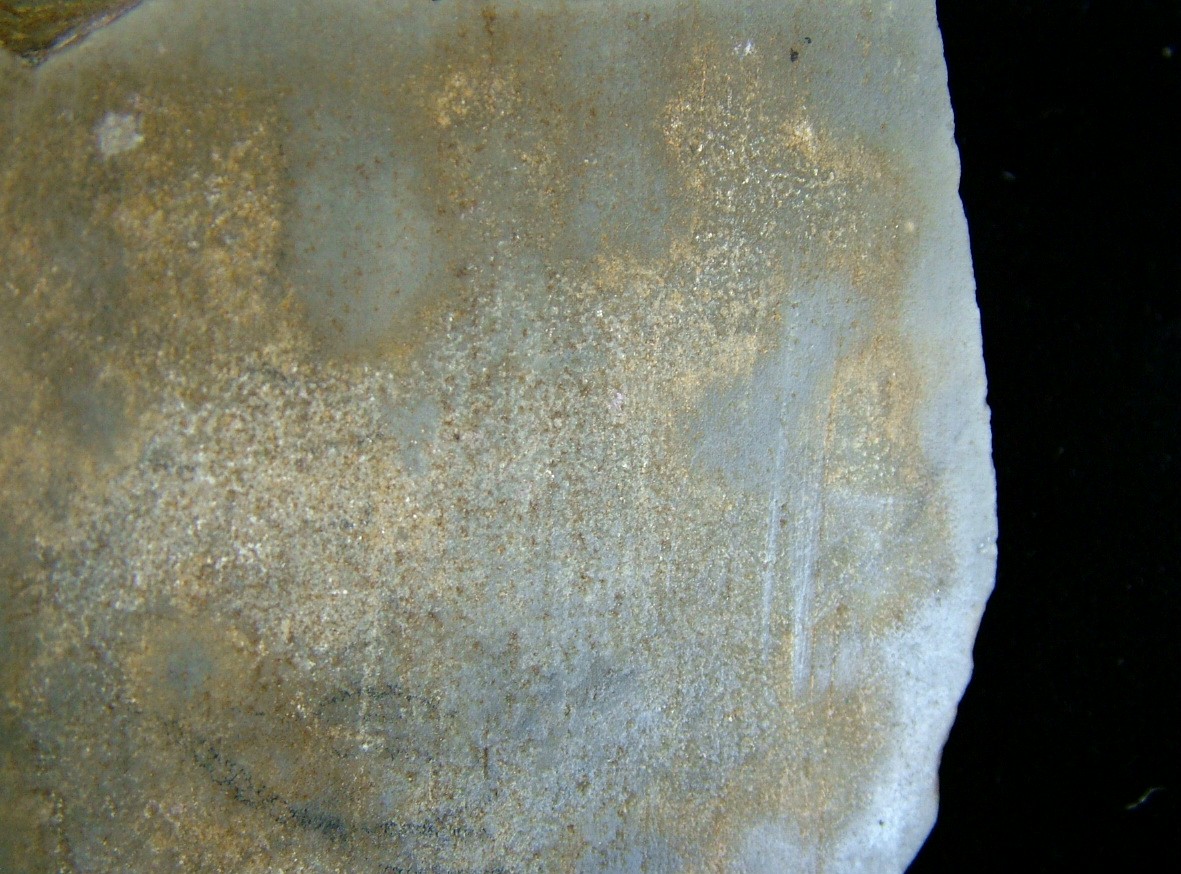
| Photo Copyright 2008 |
| David Xavier Kenney |
|
ICON'S BACK 1/2
Pictures 1 thru 3 shows a sword or dagger in a stone. Behind this there is a figure with a cup that has a face on it, overhead there is a light or a star. Pictures 4 thru 8 shows a sword in the stone. The stone is also a small figure that is being held by another figure.
Copyright 2008
Revised Jul 09
|
|
